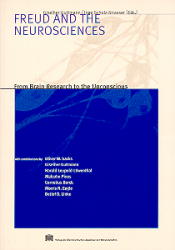Freud and the Neurosciences
From Brain Research to the Unconscious
Beiträge von Cornelius Borck, Beiträge von Morris N Eagle, Beiträge von Giselher Guttmann, Beiträge von Harald Leupold-Löwenthal, Beiträge von Detlef B Linke, Beiträge von Malcolm Pines, Herausgegeben von Inge Scholz-Strasser, Beiträge von Oliver Sacks
While still a student Freud published his first research papers on neurology. These papers reflect his early scientific career which led him from his physiological research on eels to the river crayfish and its nervous system. It was a decidedly physicalistic-scientific concept of the world with which the young Freud was confronted by his teachers and which he readily accepted. As a consequence of his neurological studies, Freud developed his earliest psychological theory. Although he soon rejected this scientific model which attempted to explain the psychical apparatus by means of the physiology of the brain, his scientific interest was henceforth determined by his search for the precise structure of the psyche. It is the thesis of the authors that the concepts of psychoanalysis are based on the same scientific foundations that had determined Freud´s early neuroscientific research and that he never really abandoned or modified this epistemological orientation in any decisive way even in his later work. Contents: Giselher GUTTMANN – Inge SCHOLZ-STRASSER: Preface; Oliver W. SACKS: Sigmund Freud: The Other Road; Giselher GUTTMANN: From the Sum of Excitation to the Cortical DC Potential. Looking Back a Hundred Years; Harald LEUPOLD-LÖWENTHAL: Freud as a Neurologist; Malcolm PINES: Neurological Models and Psychoanalysis; Cornelius BORCK: Visualizing Nerve Cells and Psychical Mechanisms. The Rhetoric of Freud´s Illustrations; Morris N. EAGLE: Freud´s Legacy. Defenses, Somatic Symptoms and Neurophysiology; Detlef B. LINKE: Discharge, Reflex, Free Energy and Encoding.
